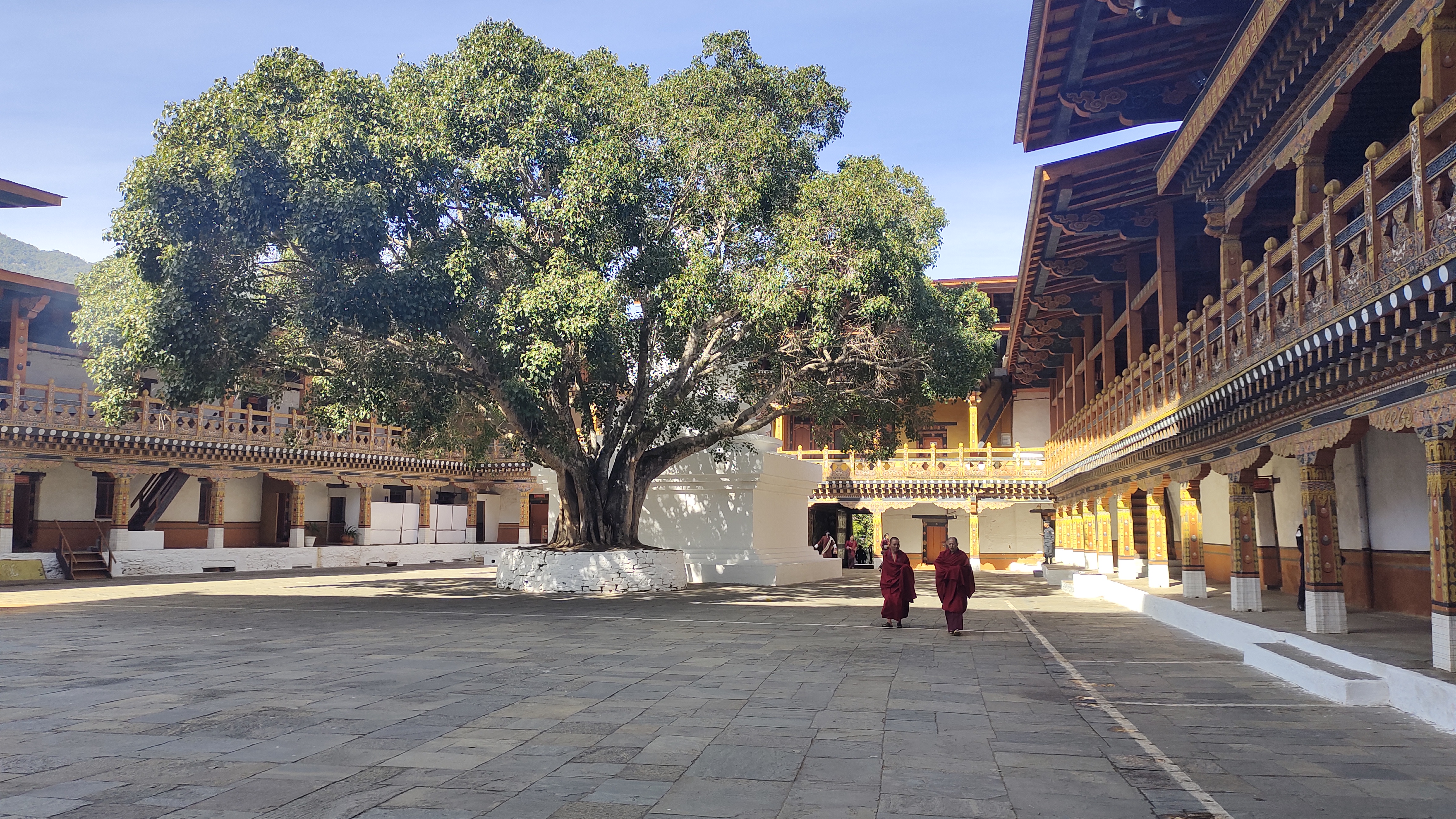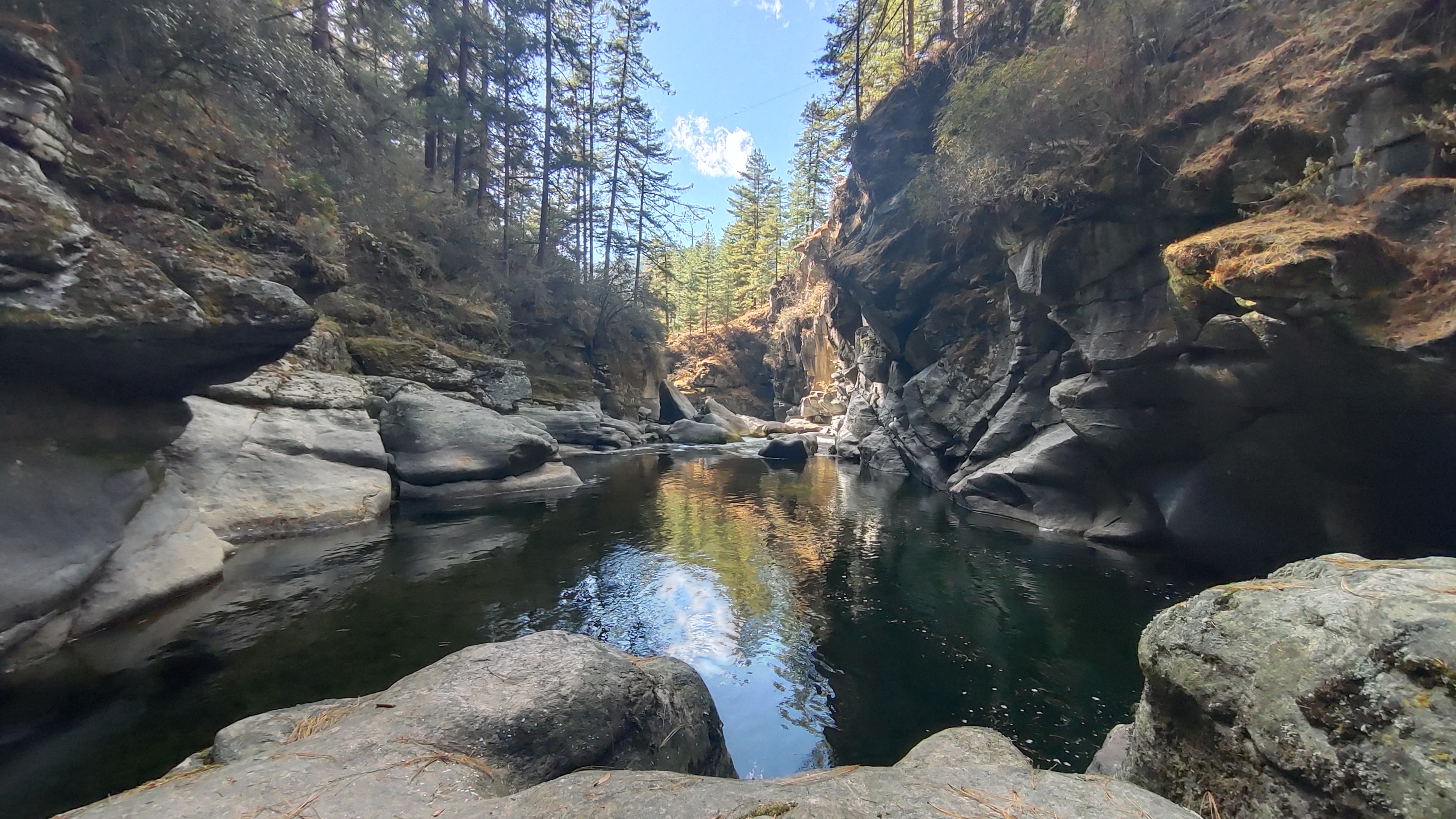Embark on a 7-day Bhutan tour that takes you to some of the most stunning and culturally rich destinations in this peaceful Himalayan kingdom. Our well-curated itinerary ensures you experience Bhutan's natural beauty, spiritual heritage, and vibrant traditions. Get ready for an unforgettable journey filled with breathtaking views, ancient monasteries, and meaningful cultural encounters.
Day 1: Arrival in Paro – Travel to Thimphu
Upon arrival at Paro International Airport, you’ll be greeted by our friendly guide, who will escort you to Thimphu, Bhutan's capital city. Situated at an altitude of 7,333 feet, you will have some time to adjust to the high altitude during your scenic drive. Once in Thimphu, check into your hotel and enjoy the peaceful ambiance of the city, where you’ll first encounter Bhutanese traditions. You will see monks in red robes, men in Ghos, and women in vibrant Kiras.
The day's sightseeing includes visits to National Memorial Chorten, a stupa built in 1974 to honor Bhutan’s third king, Jigme Dorji Wangchuk. You'll also explore the Tashichho Dzong, an impressive fortress and Buddhist monastery, and the Centenary Farmers’ Market, where you can see Bhutanese farmers selling local produce. Don’t miss the stunning Buddha Dordenma statue, one of the largest bronze Buddha statues in the world, located at Kuenselphodrang Nature Park, offering panoramic views of the valley.
Day 2: Explore Thimphu
Start your day with a visit to Sangaygang (BBS Tower), a viewpoint offering a panoramic view of the entire Thimphu city. You’ll also have the chance to spot Bhutan's national animal, the Takin, during your visit. If you're an early riser, consider taking a walk up to the tower.
Next, visit Dechen Phodrang, home to the state monastic school since 1971. Discover Bhutan's spiritual education system as you learn about the training of over 450 monks. Afterward, immerse yourself in Bhutan's living culture at Simply Bhutan, a museum and photo studio that celebrates Bhutanese traditions.
End your day with a visit to Simtokha Dzong, the first dzong built in Bhutan in 1627. Today, it houses the Institute for Language and Cultural Studies, and the artistry on the prayer wheels and slate carvings is truly remarkable.
Day 3: Thimphu to Punakha
Today, drive to Punakha, the former capital of Bhutan. On your way, stop at Dochula Pass, where you can enjoy panoramic views of the Himalayas. Visit the 108 Druk Wangyal Chortens, built in memory of Bhutanese soldiers who lost their lives in a 2003 conflict.
Explore Druk Wangyal Lhakhang, a temple built to commemorate the 100th anniversary of the monarchy. Upon arrival in Punakha, visit the Punakha Dzong, one of the most beautiful and historically significant dzongs in Bhutan, located at the confluence of the Pho Chu and Mo Chu rivers.
Don't miss the Pho Chhu Suspension Bridge, the longest suspension bridge in Bhutan, offering incredible views of the valley and Punakha Dzong.
Day 4: Explore Punakha
Begin your day by visiting Khamsum Yuley Temple, an architectural masterpiece built by the Queen Mother of the 5th King to bring universal peace. The temple is adorned with intricate paintings of Buddhist deities and spiritual symbols.
For lunch, enjoy a picnic by the riverside, followed by a home visit where you can interact with a Bhutanese family, experiencing local hospitality firsthand. This is an excellent opportunity to learn about the traditional way of life in Bhutan.
Day 5: Punakha to Paro
Travel to Paro, home to some of Bhutan’s most iconic monasteries and temples. Visit the Kyichu Lhakhang, the oldest temple in Bhutan, built in the 7th century by Tibetan King Songtsen Gampo. This temple is one of the 108 constructed to subdue an ogress that obstructed the spread of Buddhism.
Also, explore the Dilgo Khyentse Rinpoche Museum, dedicated to the late spiritual teacher, housing photographs and artifacts that tell the story of his life.
Day 6: Paro – Taktsang Monastery (Tiger’s Nest)
Today, hike up to the world-famous Taktsang Monastery (Tiger’s Nest), Bhutan’s most iconic and spiritual landmark. Perched on a cliff 2,000 feet above the valley, the monastery offers not only spiritual enrichment but also stunning views. According to legend, Guru Rinpoche flew to this location on the back of a tigress and meditated here, making it a sacred site for Bhutanese Buddhists.
The hike may take a few hours, but the view from the top and the sense of accomplishment make it worth the effort. The monastery’s beauty and spiritual significance will leave you in awe.
Day 7: Departure from Paro
After a week of exploration, it’s time to say goodbye to Bhutan. We hope that by now, you have made lasting memories, experienced Bhutanese culture and hospitality, and captured beautiful moments in photographs. Tashi Delek, and we look forward to welcoming you back to Bhutan in the future!

















